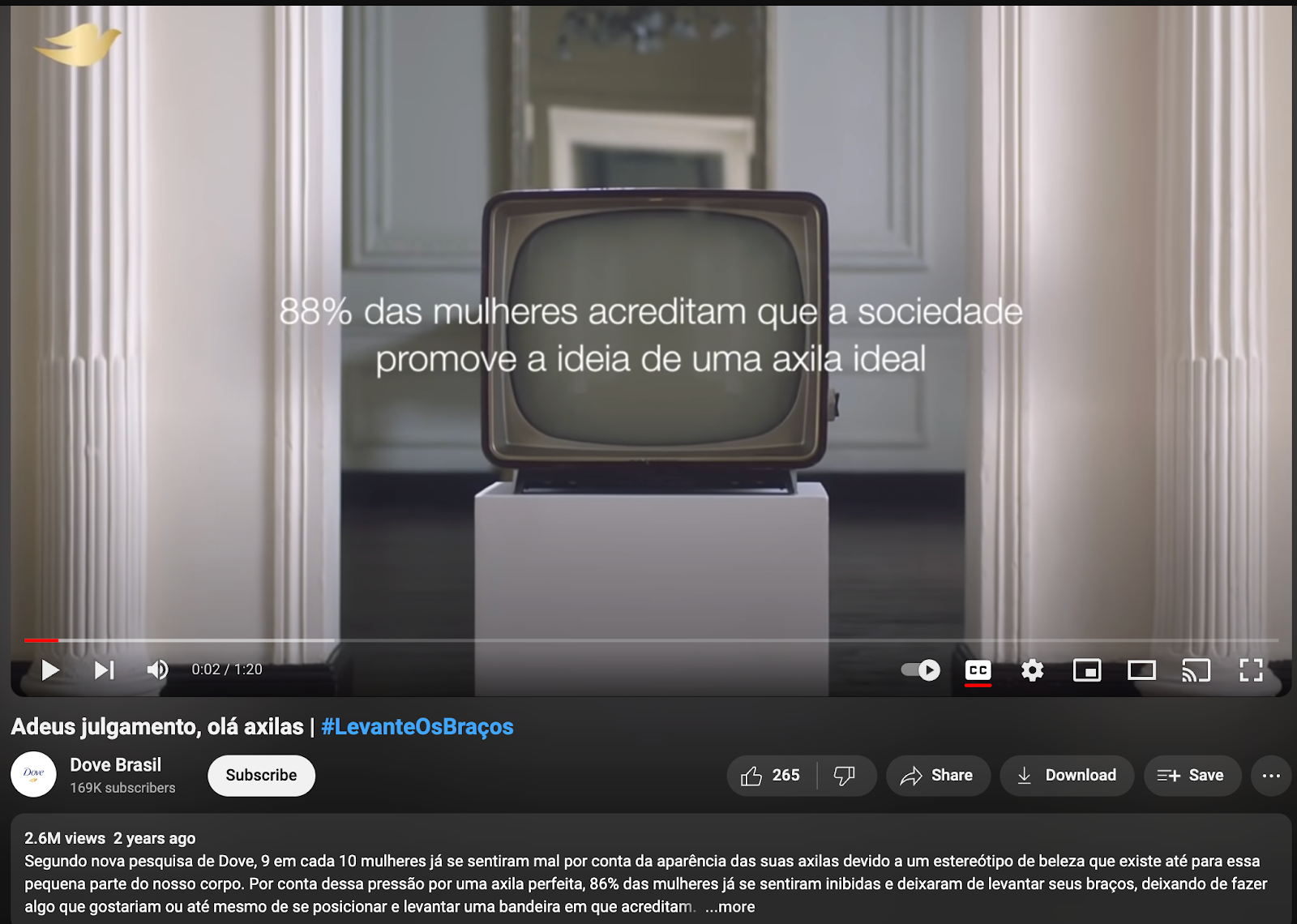At the heart of global expansion are effective communication and engagement with diverse audiences worldwide.
You want to make it as easy as possible for prospective customers to read about your products or services and, ultimately, buy them. If they come across content that’s not in their language or is culturally inappropriate, chances are they won't click to read further.
Only about 18% of the world’s population speaks English, so you need a creative media localization strategy to help you reach global audiences that speak other languages. It’s more important than ever to adapt your content across media to meet local markets’ unique needs and preferences.
Below, we’ll cover exactly how to go about media localization for your global business, including the best practices to follow.
The benefits of media localization
As business and consumer landscapes shift to global stages, any brand that hasn't already localized its media is leaving money on the table. Media localization drives faster expansion within niche markets and facilitates seamless international growth.
As Nelson Mandela rightly said, "If you talk to a man in a language he understands, that goes to his head. If you talk to him in his own language, that goes to his heart." Media localization enables deeper resonance with prospective customers and provides a consistent experience across the multiple touchpoints that a customer might have across your media content.
Moreover, localized content that caters to specific regions experiences a 12 times higher engagement rate than non-localized content. Media localization makes it easier to build trust and loyalty across borders, gain more customers, and ultimately increase revenue.
How does media localization differ from regular localization?
Media localization specifically focuses on creative media, such as social media content, TV or video content, radio programs, and podcasts. It involves localizing these assets to suit new markets’ needs.
Here's how it differs from a typical localization process:
Scope and complexity
Compared to text-based content like websites and documents, audiovisual content like videos, films, and podcasts requires more complex linguistic and technical work. For instance, media localization must account for elements like voice-overs, dialogues, and subtitles while keeping local cultural differences in mind.
Diverse skills
Beyond just language translation, media localization requires a complex skill set to work with multimedia files, such as subtitling, video editing, and dubbing. Opt for translators who live in your target market and are native speakers. They understand cultural references and know what phrases and idioms will resonate well with local audiences. Smartling works with some of the best translators to help businesses produce localized content that is rich with industry context and cultural nuances.
Advanced technology
Media localization requires specialized technology and tools for localizing multimedia content. For instance, speech-to-text and text-to-speech systems are rapidly advancing and can now create audio subtitling or voice-overs automatically.
Additionally, an AI-powered machine translation process can provide quick and accurate translations in multiple languages.
Regulatory and compliance considerations
Media content is often subject to stricter regulations and compliance requirements, especially for entertainment and advertising. Several countries have legal requirements for captioning and subtitling media content. For example, laws in Brazil once required any live content to have at least 98.5% accurate captions to ensure that viewers receive clear, reliable information.
Media localizers must ensure that the adapted content adheres to local laws and censorship guidelines in the target market.
What media content can you localize?
Media localization involves adapting several content formats across multiple channels. Here are some types of media content you'll need to localize when entering a new market:
Social media
As of January 2024, there are over 5 billion social media users worldwide, which highlights the immense potential for brand exposure. Leveraging social media marketing strategies can amplify your brand's reach and engagement and help you tap into this vast online audience.
However, using the same content across all your multilingual social channels is not going to cut it. Some posts will fail to resonate in different languages, just as some jokes will not land in your target language.
Social media localization ensures that content is relevant culturally, accounts for local holidays, and is up to date with recent happenings or trends in your target markets. For example, here's how McDonald's Indian Instagram account refers to a popular sport (cricket), performs moment marketing, and strikes a chord with the local audience.  Social media localization — McDonald's India (Source)
Social media localization — McDonald's India (Source)
Here's what you can localize:
- Social media posts across Facebook, Instagram, Twitter, LinkedIn, and Threads
- Captions and hashtags
- Visuals like images and GIFs
- Video content with voice-overs or captions
To learn more, explore our expert tips on how to best localize your brand's social media.
Emails and newsletters
Whether it’s promotional emails or curated newsletters, ensure that you are localizing your email content for different languages. Use local imagery and don't forget to customize currencies, dates, cultural references, colors, and calls to action (CTAs) for each market. Localized subject lines and CTAs can also improve conversion rates drastically.
If you’re not quite sure where to start with this, read up on email localization strategies and best practices.
Videos, podcasts, and TV content
Audiovisual content requires more extensive localization to make it accessible and relevant to new audiences. Moreover, engaging with local influencers to create audio or video content is a great strategy to establish an instant connection with your audience and expand your brand’s reach.
Dove's ”Real Beauty” campaign is a great example of media localization done well. Here's how Dove customized its video content for its audience in Brazil:  How Dove implemented media localization (Source)
How Dove implemented media localization (Source)
Audiovisual localization options include:
- Subtitles or closed captions in the local language
- Voice-overs or dubbing
- Adapting on-screen text, graphics, and visuals
- Adjusting cultural references, humor, and tone
Key considerations for a successful media localization process
Successful media content localization requires careful planning. Before beginning the process, keep these best practices and key pointers in mind to set yourself up for success:
1. Choose the right content to localize for your target audience
Before you begin the localization process, it's essential to identify the content that will resonate most with your target audience. Conduct market research and surveys to understand your customers' preferences, cultural nuances, and language requirements.
Here are some data points you might want to pay close attention to:
- What is the most spoken language in your target market? Are there any dialects to be aware of?
- What are the most popular local holidays or events?
- Does your target audience prefer video content over textual content? Do they prefer watching videos with dubbing or subtitles?
- What are the most popular social media platforms in the target market?
Based on your market research, focus on localizing content that is most likely to engage your target audience and drive meaningful results.
2. Create content with localization in mind
Incorporate localization considerations into your content creation process. This can save time and resources down the line. When developing new media content, think about how you can adapt it for different markets and languages. Design flexible templates and ensure that you structure the content in a way that facilitates easy localization.
Check out our top five tips to enhance your localization strategy.
3. Focus on localized themes and imagery
Media content localization is more than what you say—it's how you say it. Use themes, colors, and imagery that resonate with your target audience. Ensure that the music and the content’s overall tone are appropriate and relevant for the local market. Working with native speakers is a great way to capture these details flawlessly.  Netflix uses local festivals and holidays in their video ads. (Source)
Netflix uses local festivals and holidays in their video ads. (Source)
4. Work with the right media localization services
Choosing the right localization partner is paramount. Partnering with experienced media localization service providers can greatly enhance your localization efforts’ quality and efficiency. Look for providers with expertise in your industry, a track record of successful projects, and the ability to handle various media formats and languages.
Secrets from Coinbase’s successful localization strategy
Coinbase is a leading cryptocurrency exchange platform with a focus on expanding crypto asset adoption globally. Its globalization strategy tightly aligns with its mission to increase economic freedom worldwide.
Here's how Coinbase translated its content into 21 languages in only two months without compromising on quality:
- The company used a combination of internally hired linguists with crypto expertise and Smartling's language quality assurance to ensure accurate and industry-relevant translations.
- Coinbase leveraged a translation management system (TMS) and centralized glossaries to standardize the translation of ever-evolving crypto concepts. This helped the company scale translations globally.
- Coinbase's localization team performed user segmentation for different markets to understand each user’s journey. This formed the basis of the company’s localization strategy.
The result? Coinbase is on the fast track to global growth while scaling translations. Read more about Coinbase's trail-blazing localization journey.
Leveraging Smartling for effective media localization
Media content localization goes beyond just translation—it also demands deep market research, collaboration with native speakers and influencers, and efficient translation tools.
Smartling is the all-in-one translation management platform localization teams need to translate and localize content. Its features include:
- A TMS that enables multiple users to manage content with a single view of all translations and real-time progress updates
- A transcreation tool that helps you deliver high-quality content that feels culturally relevant to your audiences
- A computer-assisted translation tool that allows linguists to have visual context into what they’re translating, reducing errors and leading to higher-quality work.
- An industry-best network of translators across the world with a blend of cultural and industry expertise
 Smartling's translation management platform enables scalable translation. (Source)
Smartling's translation management platform enables scalable translation. (Source)
Ready to get started on your localization journey? Discover how Smartling can transform your media content for global markets—book a meeting now.
%20052925%20-%20AI%20Translation%20101%20(1).png)
.jpg)